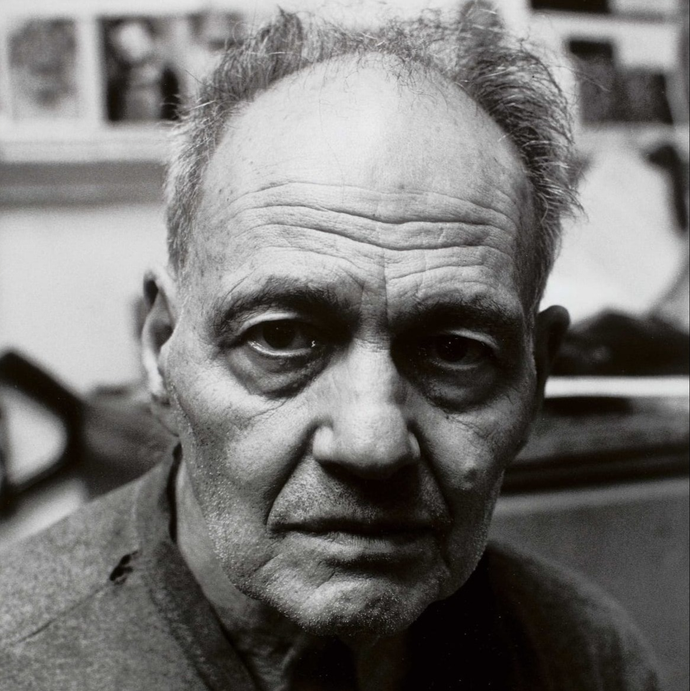
Frank Auerbach
Frank Auerbach, an inventive painter and one of the most influential contemporary artists of the post-World War II period, is celebrated for his vividly colored and heavily textured canvases.
Biography of Frank Auerbach
Born in 1931 to Jewish parents in Berlin, Germany, Auerbach was sent to Britain in 1939 to escape the persecution of the Nazis. Tragically, his parents, unable to flee, died in concentration camps.
Auerbach began his artistic journey by enrolling at Saint Martin’s School of Art in 1948 and attending evening classes taught by David Bomberg at Borough Polytechnic. During this period, he forged a close friendship with fellow painter Leon Kossoff and later developed profound connections with Lucian Freud and Francis Bacon. Auerbach furthered his studies at the Royal College of Art in London, where he established his studio in Camden Town shortly before graduating in 1955. In the subsequent year, he held his inaugural solo exhibition at the Beaux Arts Gallery in London, showcasing his distinctive style characterized by thick, layered brushwork.
From 1965, Auerbach has exhibited with Marlborough Fine Art in London and Marlborough Gallery in New York. His artistic achievements were acknowledged with distinction in 1978 when he received a retrospective at London’s Hayward Gallery. In 1986, he represented Britain alongside Sigmar Polke at the Venice Biennale, where they jointly received the Gold Lion award. In 2015, a significant retrospective of his works was presented at London’s Tate Britain in collaboration with Kunstmuseum Bonn. Despite receiving offers, Auerbach has consistently declined a knighthood. Currently, his paintings are housed in the permanent collections of London’s Tate Gallery and National Portrait Gallery, New York’s Museum of Modern Art, and Madrid’s Museo Nacional Thyssen-Bornemisza.
Frank Auerbach stands as a pivotal figure among postwar painters, not solely due to his legacy but equally due to his substantial influence on artistic evolution. Currently, the artist resides and creates in London.
Frank Auerbach's Art Style
Auerbach gained prominence through his figurative artworks, solidifying his reputation as an accomplished creative force. Intriguingly, the two primary subjects that frequently appear in his pieces are his wife, Julia (full name Juliet Yardley Mills), referenced in his artworks by her initials, J.Y.M., and his intimate companion Estella Olive West, whose initials, E.O.W., were similarly employed.
Known for his modest lifestyle, Auerbach infused this same unpretentiousness into his creations, often drawing inspiration from the surroundings near his studio in Camden, London. Nevertheless, his artistic output is brimming with imaginative intricacies and profound dimensions that spill across the entirety of each of the artist's canvases.
Auerbach’s meticulous artistic process mirrors this same depth and intensity; he patiently layers, scrapes, shapes, and revises his paintings over extended durations. While often compared to fellow artists like Francis Bacon and Lucian Freud associated with the School of London, Auerbach refrains from aligning himself with any specific artistic group. Nonetheless, he actively engages in direct conversation with art history, drawing influence from both past and contemporary masters such as Rembrandt, Rubens, Titian, Constable, and Picasso.
Years:
Born in 1931
Country:
Germany, Berlin
Gallery: